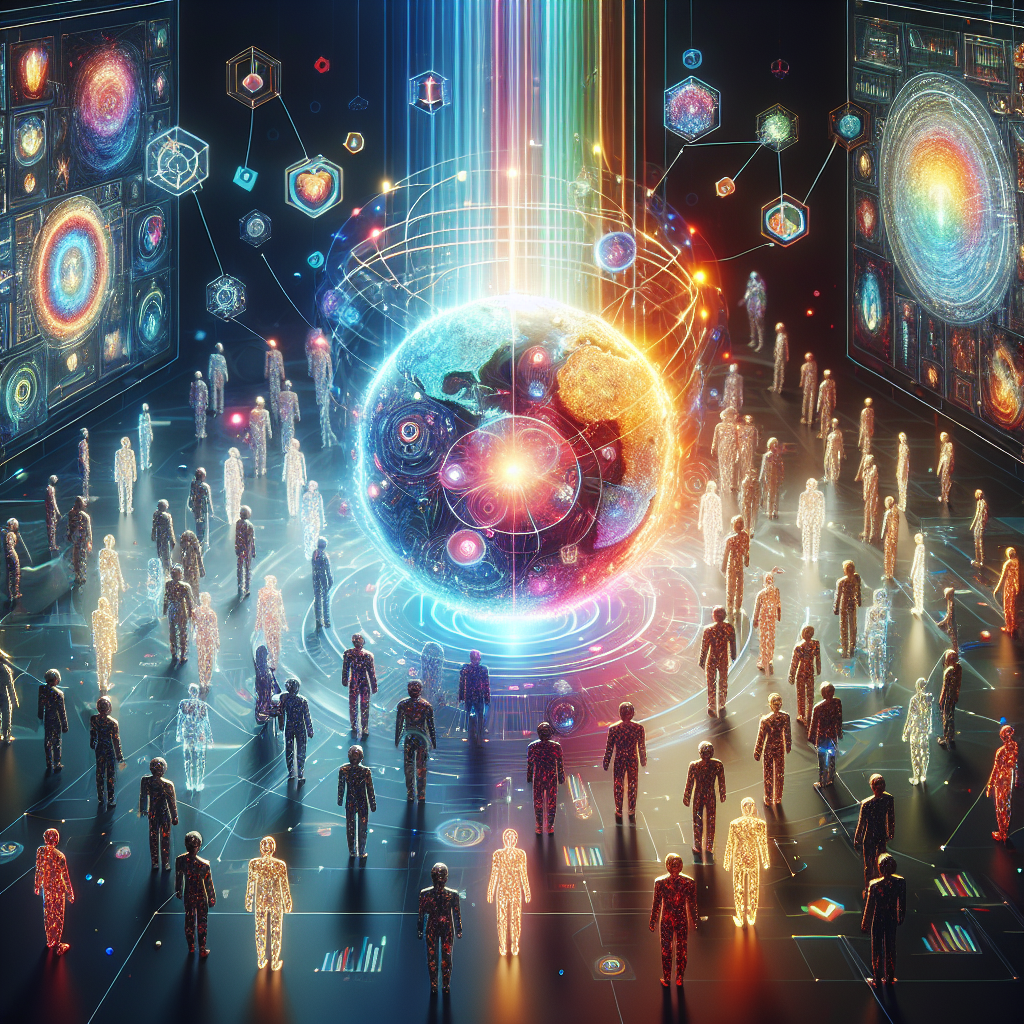Generative AI: A New Frontier in Creative Collaboration
Artificial Intelligence (AI) has made significant advancements in recent years, particularly in the field of generative AI. Generative AI refers to algorithms and models that can generate new content, such as images, text, music, and even entire virtual worlds. This technology has opened up a new frontier in creative collaboration, allowing artists, designers, and creators to work alongside AI to produce innovative and unique creations.
One of the key applications of generative AI is in the field of art and design. Artists and designers can use generative AI tools to explore new ideas, create original artwork, and push the boundaries of traditional artistic practices. For example, artists can use generative AI algorithms to generate abstract patterns, create unique digital sculptures, or even design entire virtual environments. These tools can help artists break free from creative blocks, inspire new ways of thinking, and push the limits of their creativity.
Generative AI has also revolutionized the field of music composition. Musicians and composers can use generative AI algorithms to create new melodies, harmonies, and rhythms, or even generate entire pieces of music. These tools can help musicians experiment with different musical styles, collaborate with AI to create new soundscapes, and push the boundaries of traditional music composition. Generative AI can also be used to enhance live performances, allowing musicians to create interactive and dynamic musical experiences for their audiences.
In the world of literature, generative AI has also made a significant impact. Writers and authors can use AI tools to generate new ideas, develop characters, and even write entire stories. These tools can help writers overcome writer’s block, explore new narrative possibilities, and experiment with different writing styles. Generative AI can also be used to create personalized storytelling experiences for readers, allowing them to interact with stories in new and innovative ways.
One of the most exciting aspects of generative AI is its potential for interdisciplinary collaboration. Artists, musicians, writers, and creators from different fields can come together to work with AI to produce truly unique and innovative creations. By combining their creative expertise with the computational power of AI, these collaborators can push the boundaries of what is possible in art, design, music, and literature. This collaborative approach can lead to the creation of new forms of expression, new ways of storytelling, and new aesthetic experiences that would not be possible without AI.
FAQs:
Q: How does generative AI work?
A: Generative AI works by using algorithms and models to generate new content based on input data. These algorithms can be trained on large datasets of images, text, music, or other forms of content, and then used to generate new content that is similar to the input data. Generative AI algorithms can use techniques such as deep learning, reinforcement learning, and neural networks to create new content that is original, innovative, and creative.
Q: What are some examples of generative AI tools?
A: Some examples of generative AI tools include StyleGAN, which can generate realistic images of human faces; GPT-3, which can generate human-like text based on a prompt; and Magenta, which can generate new music compositions. These tools are widely used by artists, designers, musicians, and writers to create new and innovative content.
Q: How can artists and creators collaborate with generative AI?
A: Artists and creators can collaborate with generative AI by using AI tools to generate new ideas, explore new creative possibilities, and experiment with different artistic styles. By working alongside AI, artists can push the boundaries of their creativity, create new forms of expression, and produce truly unique and innovative creations.
Q: What are the ethical implications of generative AI?
A: Generative AI raises important ethical questions about the role of AI in creative collaboration, the ownership of AI-generated content, and the potential impact of AI on the future of art, design, music, and literature. It is important for artists, creators, and technologists to consider these ethical implications and to work together to ensure that generative AI is used responsibly and ethically.
In conclusion, generative AI represents a new frontier in creative collaboration, offering artists, designers, musicians, and writers the opportunity to work alongside AI to push the boundaries of traditional artistic practices. By combining their creative expertise with the computational power of AI, collaborators can create new forms of expression, new ways of storytelling, and new aesthetic experiences that would not be possible without AI. As generative AI continues to evolve and mature, it has the potential to revolutionize the way we create, collaborate, and experience art, design, music, and literature.

